
- Home
- Memories
- Scrapbook ▽
- Topics ▽
- People ▽
- Events
- Photos
- Site Map
- Timeline
Return to Exeter's services
With thanks to the Devon and Exeter Institution for permission to photograph the pre 1900 newspapers. If you have an early copy of the Express and Echo or Exeter Leader why not contact me so I can photograph it and add it to this page.
Latest update 11th November 2010
It is recorded that the first printing press in Exeter was installed in St Edmunds Church by John Williams, who was rector between 1554 to 1572. The press was supplied by Tavistock Abbey, although there are no examples of printed material from this press known to survive. During the Civil War, it is thought that travelling presses were set up in Exeter by both Parliament and the King's supporters to print propaganda pamphlets.
It was Sam Farley, an established printer, who started the first weekly newspaper, the Exeter Post-man, in the city, perhaps as early as 1704; his paper may have been the first outside of London and was certainly the third. The first newspaper personality in the city was Andrew Brice who was involved in publishing newspapers from before 1715 until his death in 1773; he personified the best of early journalism and in 1727 reported on corruption in St Thomas' debtors prison, ironically spending time in 1730 confined to his house for not paying his fine for the libel alleged on the gaoler in the prison.
Robert Trewman's Exeter Mercury or West Country Advertiser of 1763 would evolve into Trewman's Exeter Flying Post by 1770, and become the first, long lived Exeter newspaper of any substance. It was published throughout the 19th century, reporting local and national news to an increasingly literate population. By the early 19th century it was firmly established at 225/226 High Street, an address that would become synonymous with newspaper publishing in Exeter. Its rivalry with Thomas Latimer's Western Times, published from Fore Street would galvanise public opinion for reform and better conditions, throughout Victoria's reign.
James Owen and W H Reed purchased the Western Times to form the Western Times Co Ltd in 1901, and on October 1st 1904, James Owen, launched the Echo with these words: "We claim to do no more than to give our friends news served up in the brightest, crispest manner we know how. Performance being at all times preferable to promise, we will not trouble our readers with protestations. Here is the paper and we must be judged by it." Their printing press was at 225/226 High Street until 1958 when they moved both editorial and production to Sidwell Street. Until 1929, the newspaper was printed on green paper, and changed to a broadsheet in 1979.
In 1917 the Exeter Flying Post closed for good, leaving the city largely served by the Express and Echo, the Western Morning News, Western Times and the Exeter Gazette (the latter two merged), a title that originated in the late 18th century as Woolmer's Exeter and Plymouth Gazette. Woolmer's Exeter Gazette gave Thomas Latimer his first newspaper job in the city before he was sacked for attacking the establishment.
Only the Express and Echo survives as a viable daily newspaper in Exeter. It moved from Sidwell Street out of the city to Sowton in 1992, and apart from a brief period after the blitz, when it was printed in Torquay, the newspaper had always been printed in the city. Northcliffe Newspapers consolidated its local newspaper interests in 2005, and the Express and Echo printing operation moved to Plymouth in the same year. Another consolidation in the face of falling sales for its regional newspapers saw the editorial office moved to Bristol on 2009 and printing to a works near London.
This is reputedly the earliest
newspaper in Exeter,
and possible the first newspaper outside of London; it is certainly the
third provincial newspaper. Produced by Sam Farley, the earliest
possible issue was 1704 and it
is known that a record from a Bishop of Exeter in 1706 mentions a
newspaper in the city. The last issue was probably 23rd September 1715,
possibly to be succeeded by the Exeter Mercury.
Farley's Exeter Journal
Samuel Farley appears with a new title on 24th May 1723 and continued
until 8th November 1728.
Farley's Exeter Weekly Journal
Another Sam Farley publication that first appeared on the 1st May 1741
to disappear in December of the same year.

The earliest known issue was on 24th September 1714. Between 28th October 1715 and June 1716 it was published twice a week, and the last known issue was in January 1722.
Pictured issue IV for Friday 8th October 1714 - cost three half pence. Printed by Philip Bishop at his Printing-office in St Peter's Churchyard.

This newspaper was started in 1709 by
Joseph Bliss,
who was already an established printer. He had apprenticed to
him, Andrew Brice who 'roguishly absconded
and deserted
from my Service' in 1715. It is
not known if the Post-Boy continued beyond 1711 and it may have
continued as either the Exeter Post-Boy or the Protestant Mercury.
The Protestant Mercury or the Exeter
Post-Boy with
News Foreign and
Domestick - Joseph Bliss
The first issue of this weighty titled Exeter newspaper was 27th
September 1715. It continued until 28th November 1718, initially with
two issues a week until June 1716.
Pictured issue XXXX (40) of 26th October 1716 - cost three half penny fine or one penny course. Bliss had complaints about the quality of his paper making the print hard to read, so he reverted to the two editions on different quality paper. Printed by Jos. Bliss at the New Printing house near the London-inn, without East-gate.


The
first of the great Exeter newspaper men, Andrew
Brice had been apprenticed to Joseph Bliss until 1715, when he absconded to
set up his own title. This, his first continued until 23rd April 1725.
After 1725, Brice regularly changed the name of his newspaper.
Brice's Weekly Journal -
30th April 1725 and
continued until 14th May
1736.
Brice's Weekly Collection of
Intelligence -
21st May 1736 to 17th
January 1746.
Andrew Brice's Old Exeter Journal or
the Weekly
Advertiser - 24th
January 1746 to 1766
Brice and Thorn's Old Exeter Journal or
Weekly
Advertiser - Brice went
into partnership with Barnabas Thorn from 1766. He retired in 1770, but
remained involved with the newspaper until his death in November 1773.
The Old Exeter Journal or Weekly
Advertiser -
continued under Barnabas
Thorn as editor, and then his son Richard from November 1773 until 1787.
Brice's Old Exeter Journal - September 1788 -
1st October 1789.
Brice & Co.'s Old Exeter Journal - editor
unknown 1789 to 5th May
1791.
Old Exeter Journal - 12th
May to November
1791. The newspaper was
purchased by Trewman's Exeter Flying-Post and closed down.
Pictured
issue 76 of the
5th January 1722. Printed
by A Brice
at the Head of the
Serge-Market, Southgate-street.
Pictured issue 281 of the
17th December 1762.
By this time Brice was
printing from Gandy Street - the change from a small newsletter type
format to a broadsheet newspaper is apparent with these two examples.
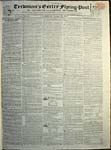
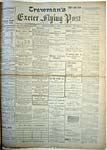
The Exeter
Mercury or West
Country Advertiser - This title would be the first of the
titles
that
resulted in the famous Trewman's Exeter Flying Post, and would continue
until 21st April 1917. It was started when Robert Trewman and
William Andrews left Andrew Brice, to establish the Exeter Mercury or
West Country Advertiser which was published from 2nd September 1763 to
5th July 1765 from
Southgate
Street; it then went through several name changes before settling on
Trewman's Exeter Flying Post. Trewman's widow, then son Robert and
grandson Robert James Trewman (died 1860) continued to run the paper,
before it was purchased by James Bellerby. It described itself as "the oldest and most extensively
circulated Conservative newspaper in the West of England".
Its
last editor was A E Richardson.
The
Exeter
Evening-Post or the Westcountry Advertiser
One issue 11th July 1765
The Exeter Evening-Post or the Plymouth
and Cornish
Courant
Produced between 18th July 1765 and the 11th September 1767.
The Exeter Evening-Post or Plymouth and
Cornish
Advertiser
Produced between 18th September 1767 and the 21st April 1769.
Trewman's Exeter Evening-Post or
Plymouth and
Cornish Advertiser
Produced between 28th April 1769 and the 21st December 1770. 86 issues.
Trewman's Exeter Flying-Post or
Plymouth and Cornish
Advertiser
Produced between 28th December 1770 and the 10th August 1848. 3933
issues.
Trewman's Exeter Flying
Post Devon,
Cornwall, Somerset, Dorset, Wilts
and Gloucester Advertiser
Produced between 17th August 1848 and the 13th April 1887. 1915 issues.
Trewman's Exeter Flying
Post -
incorporated with the Evening Post
Produced between 16th April 1887 and the 6th June 1902. 4650 issues.
Trewman's Exeter Flying Post
Produced between 7th June 1902 and the last issue on 21st April 1917.
776 issues. The plant and machinery were auctioned on the 25th April
and the office files and records purchased by the Exeter City Library.
Pictured
issue 2510 for
Thursday 14th October 1814. Printed and published by
R and M
Trewman, nearly opposite St Martin's lane, High street.
Pictured issue 11,657 for
the 21st April
1917, this being the last
Exeter Flying Post produced. The front page is covered with notices and
adverts apart from the right hand column which covers war news.
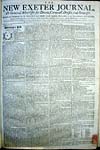
Produced from the 25th December 1788 - not known when ceased publication.
Pictured issue 4 for Thursday 15th January 1789. The front page was all news, with one report on the state of the King George III's health which was of national concern at the time; the film The Madness of King George is based on this illness and incident. The report mentioned that Dr Willis and Mr Ernest, the King's page were in disagreement, with the doctor accusing the page of upsetting the King when he was being examined by the physician; consequently, Mr Ernest was refused access to the King. There was no local news on the front page.
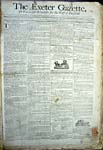
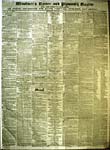

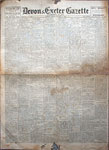
Exeter
Gazette or Universal Advertiser for the West
of England - produced from 12th January 1792 it then became
Woolmer's
Exeter and Plymouth Gazette or Universal Advertiser for the West of
England
After December 1792 and then a succession of titles until 1952.
Woolmer's Exeter and
Plymouth Gazette
or Universal Advertiser for the
West of England.
Produced sometime after 1792 and continued until 30th December 1864.
The Exeter and Plymouth
Gazette
Produced between 6th January 1865 and the 24th April 1885. Issues 8202
The Devon and Exeter
Daily Gazette
Produced between 1st May 1885 and the 30th April 1892. Issues 2175.
The Daily Gazette
Produced between 2nd May 1892 and the 19th January 1895. Issues 842.
The Devon and Exeter
Gazette
Produced between 21st January 1895 and the 20th April 1903 as a daily
newspaper. Issues 2561.
Devon and Exeter
Daily Gazette - pictured
Produced between 21st April 1903 and the 26th February 1932. Issues
9179.
Devon and Exeter Gazette
Produced between 4th March 1932 and the 27th June 1952. Issues 1025.
Western Times and Gazette
Produced from 4th July 1952 after incorporating the Devon and Exeter
Gazette.
Pictured
issue 26th
January 1792 at a cost of 3½d.
The front page is part news and part notices and adverts. The news is a
despatch from the Hague and Court News. There is a notice for the
London to Exeter coach service from the Half Moon and Royal Clarence.
Pictured issue 2556 for
Saturday 2nd January
1841 at a cost of
4½d. The front page is all notices and adverts. There are
several
for medicinal teas, Mr
Cockles
Antibilious Pills and cures for unmentionable diseases. Mr Trollopes new work 'Charles
Chesterfield the Youth of Genius' was appearing in the New
Monthly Magazine according to a notice.
Pictured issue 25,756 for
Tuesday 1st January
1929 at a cost of one
penny. The old format of notices and adverts on the front page still
persists in 1929. French's are advertising Laying Meal for the home
poultry keeper, while Gratwicke at Topsham have Wireless sets complete with
speakers from
£12.
Pictured issue 27,502 for
Friday 18th January 1946 at a cost of 2d. The last version of the
Gazette before it was merged with the Western Times, it remained
faithful to the format of local adverts and notices on the front page
for Exeter and Devon.
See Western Times, below, for a
front page of the Western Times and Gazette.
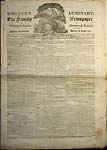
Produced between 8th March 1813 and
the 28th
December 1835. Issues 1187
The Western Luminary and Family
Newspaper for Devon,
Cornwall, Somerset
and Dorset
Produced between 4th January 1836 and the 29th September 1857. Issues
1170. It incorporated the Exeter Independent in 1832.
Pictured issue of 28th November 1815. One article discusses a meeting of the Commissioners of the Exeter Improvement Act on the desirability of establishing a watch for detecting predators and conferring with magistrates. Molland and Lee also wished to inform their friends and ladies that they have returned from London with an Elegant Assortment of Millinery Dresses.
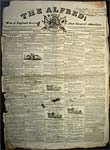
Produced between 6th June 1815 and the 23rd August 1831. Issues 846.
Pictured issue 143 of 18th July 1815 at a cost of 8½d; hand printing newspapers, along with the stamp duty on them, made them very expensive for the working man. Front page articles are still discussing the aftermath of Waterloo. There was also an advert for an exhibition of large as life figures from Madam Tussauds at a large room in Musgrave's Alley off the High Street.
Produced between the 20th October 1821
and the 14th
April 1827. Issues 287
Devonshire Chronicle & Exeter
News
Produced between 21st April 1827 and the 4th February 1837. Issues 509.
Besley's Devonshire Chronicle &
Exeter News
Produced between 11th February 1837 and the 25th November 1850. Issues
743.
Devonshire Chronicle and Exeter News
Produced between 2nd December 1851 and the 22nd March 1853. Issues 62.
Besley the printer became known for its annual trade and street directories, which are an invaluable resource for the historian.
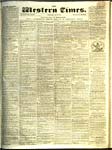
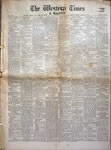
Exeter
Weekly Times and West of
England General Advertiser - produced between 6th October
1827
and the 17th May
1828. Issues 33.
Exeter Weekly Times Plymouth, Devonport
& West
of England General
Advertiser
Produced between 24th May 1828 and the 27th October 1828. Issues 31.
The Western Times
Produced between 3rd January 1829 and the 27th June 1952. Issues 23268.
This is the newspaper run by Thomas
Latimer and his son Hugh Latimer.
It became part of the Western Times Co in 1902.
The Western Times and Gazette
Incorporated the Devon and Exeter Gazette until 4th July 1952. Issues
1793.
Pictured
issue 250 of the
28th July 1832 price 7d.
About half the front page consisted of news from other newspapers,
about a third was notices and the rest of the page was adverts. The
biggest local story of the time was the cholera outbreak in Exeter, and
yet it only appeared on an inside page. However, Rowland's Macassar Oil
was good for Improving,
Beautifying
and Preserving the Hair. There were also several letters
from
prospective Parliamentary candidates canvassing for support or refuting
rumour.
Pictured
Issue 23,527 of the 9th March 1956 price 3d. Now the
Western Times and Gazette, the front page is very old fashioned, having
only adverts, mostly for cattle and agricultural auctions and property.
Produced between 30th September 1836 and the 10th January 1837. Issues 15.

Believed to be one issue on the 2nd May 1856.
Pictured issue is the first and only issue of the 2nd May 1856, price 2d. The front page is a mix of notices, adverts and news. It includes a births, deaths and marriages column, along with paragraphs of local news for St Thomas, St Sidwell, Crediton, Morchard Bishop, Dawlish, Torquay and other places. Altogether, a newspaper that reflected the local area.
Produced between 3rd October 1856 and the 26th December 1857. Issues 65.
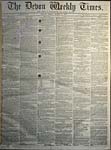
Produced between October 1861 and the 30 September 1904. Issues 2230 and then it was incorporated with the Western Times.
Pictured issue 76 Friday 13th March 1863 at a cost of 1d. The front page is all notices and adverts, with many auctions and sales of property. Notices from the various turnpike trusts around the city are evident and the bankruptcy proceedings against some individuals are displayed.
Produced between 4th February and the 11th July 1863. Issues 134 and then it was incorporated with the Western Morning News.
Produced between 7th February 1863 and the 6th February 1866. It continued as the Exeter and Plymouth Gazette Daily Telegram between 7th February 1866 and the 30th April 1885.
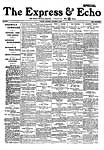 Express
and Echo
Express
and Echo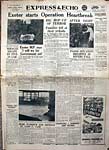
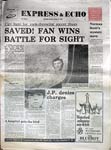

The Evening
Express of the Devon
Weekly Times - produced between December 1866 and the 25th
October
1873. Issues 2303,
The Devon Evening Express, ;27th
October
1873 and the 30th September
1904. Issues 8455
Amalgamated with Western
Echo and Star to become The Express
and Echo 1st
October 1904 to date.
The Express and Echo was launched in 1904 by
James G Owen and W H Reed after they purchased the Western Times in
1901.
Pictured Issue No 1 of the 1st October 1904 leading with an international story about
the Russian Japanese war. There is also a short story of a cyclist who
has been decapitated in an accident. Courtesy Express & Echo.
Pictured
issue 27,564 of the 28th October 1960 featuring a story about
the aftermath of the October 1960 floods, including an interview with
the landlord of the Royal Oak, Okehampton Street. The latest evidence
in the Lady Chatterly obsenity trial is mentioned
Pictured
issue 33,432 of the 15th October 1979 – an early tabloid
format, featuring a story of a 10
year old who had to have eye surgery after a rock was thrown through
the window of a Chester City supporters coach, by a youth wearing
Exeter City colours. The Blueboy in Princesshay were advertising
Waterford Crystal (both now gone).
Pictured
issue 20th
September 2007 featuring the
opening of Princesshay along with an advert for the Stagecoach singing,
dancing and acting schools.
A spin-off from the Express and Echo.
Produced from 1st September 1906 until the 18th December 1954. Not
published during the two world wars.
Incorporated with the late edition of the Express and Echo.
Produced from December 1969 until April 1974, possibly monthly as there were 56 issues.
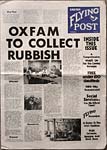
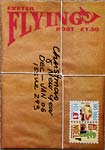
The first issue (pictured) of the
independent
Flying Post was on the 19th February 1976.
Initially weekly, it has been fortnightly, monthly, bi-monthly and
occasional ever since. It has also evolved from a newspaper format to a
glossy, colour magazine to an almost news sheet format. from June
1979.
The editorial policy in the first issue was that it would cover 'events, people and facilities' and 'that the citizens of Exeter shall write it'. Always anti-establishment, sometimes pertinent and often irrelevant would best describe the Flying Post.
Pictured
issue is the
first of 19th February 1976.
There is one main article about Oxfam collecting the rubbish, and not a
single advert on the front page. Inside was a cartoon about the Golden
Heart Centre development and an interview with Richard Key, the Exeter
City goalkeeper at the time. The cost was 6p.
Pictured issue 293,
December/January 2006
cost £1.50. The glossy
cover is made to look like a brown paper parcel.
Produced from the 7th October
1977 until the
8th November 1990, selling initially for 10p, it became free within Exeter during 1990 and available for purchase from newsagents outside the city. Produced from premises in Queen Street, Market Street and finally York Road. The Northcliffe Newspapers (Daily Mail Group) purchased a 24.9% share of the business, eventually installing their own editor, at the start of 1990, in the York Road premises.
Exeter Journal
Incorporated the Exeter Weekly News and produced from the 16th November
1990 until the 31st
May 1991. The Exeter Journal was closed to give a free reign to the Exeter Leader.
Produced from the 4th March 1980 until the 24th July 1980, with gaps.
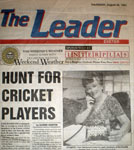 The
Exeter
Leader
The
Exeter
Leader
The Devon Trader was a free weekly newspaper produced from
September 1981
until December 1981
Became the Exeter Trader,
January 1982 until
March 1982
Became the Exeter
Advertiser,
from 18th March 1982 until the 5th July 1984
Exeter Leader - published
from 1984 until
2005, from the same premises by the Western Times Co, Heron Road,
Sowton Industrial Estate,
Exeter. At its height in 1998 it had a circulation of 50,000. It became
so much chip paper for many, when it became largely a vehicle for
advertising,
with all news dropped apart from the front page, and Russell Grant's
horoscope.
Featured Issue 26
August 1994 with a story about a hunt for cricket players from a team
that played 50 years before.
Note
featured
issue - Only a part front page for 26 August 1993 is available.
Featured Issue 20th January 2005 has
a story about a seven year old who has raised money for Tsunami
victims. Courtesy Express & Echo.
Weekly free paper produced from the
19th July 1984
to the 21st November 1985. Issues 70
In First - replacement for
the Weekender
produced from the 3rd December 1985 until the 21st January 1986. Issues
7.
Produced from the 9th March 1989 until 1991. One of several short lived free newspapers in the city. It always seemed to me that when an independent newspaper such as the Exeter Herald was started, rivals would work hard to snuff it out before it could establish itself.


Free paper from the Express and Echo from 2006 to the present. It uses a few stories from the previous week from the Express and Echo, along with a high percentage of advertising and special features. It cannily includes the weekends television listings. It has a circulation of 43,500.
Pictured
issue 12th January 2006 cost free or 20p
when sold. The leading article was about a replacement swimming pool
for Pyramids, a story that is still running. Courtesy Express &
Echo.
Pictured
issue 10th April
2008. The main article was about youths attacking wild life on the
River Exe. There was an advert for 7 quality windows and for Steptoe
Market, Marsh Barton.
Sources: The Devon Library Service Local Studies website, Cobbett of the West by Hugh Latimer and the newspapers themselves.
│ Top of Page │